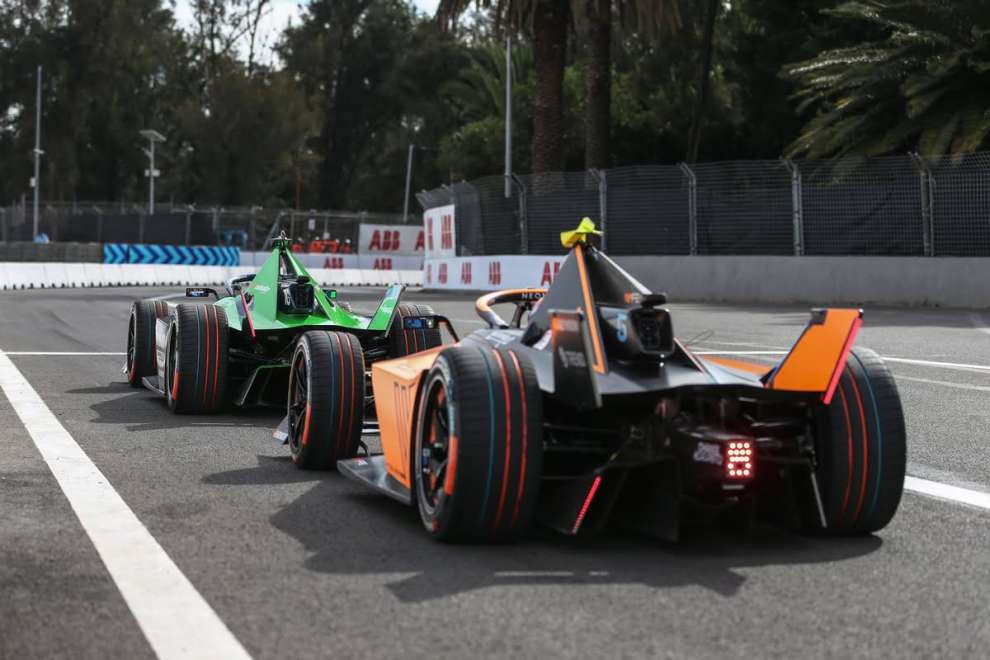By Carlo Platella
Another innovation is preparing to debut in Formula E. It is theAttack Charge, the rapid charging stop for the cars, which will bring pit stops back to the category from the days of car changes during the Gen1 era. Charging the single-seaters in the race will introduce an extra variable into the E-Prix, but it is not a given that it will liven up the spectacle. More than one driver has expressed his doubts about what the race dynamics could be, especially in the case of Safety Cars and Full Course Yellows.
Attack Charge: how it works
Originally scheduled for 2023, Attack Charge was pushed back to the start of the current season, only to be pushed back again midway through the season. The organizers preferred to take all the time necessary to experiment with the new technology, in a period in which the debut of the Gen3 has already brought with it several innovations. According to Pascal Wehrlein, however, the introduction of pit stops at the Misano E-Prix in April is credible: “It's something we tested a lot, in Valencia and in general before the season. We have quite a bit of experience with this technology and introducing it this year is realistic”.
During the stop, the mechanics will connect a connector to the socket located behind the hood of the car. At that point, the battery will be recharged for 30 seconds at a power of 600 kW, recovering approximately 5 kWh, between 10 and 15% of the energy granted at the start of the race. Each team will have to respect a minimum stopping time, but above all they will be able to recall their driver to the pits only in a limited window.
The interval will not be expressed in number of revolutions, but in terms of residual energy. Each pilot will be able to make his own stop only after having fallen below a battery charge limit and before having exceeded a minimum threshold. Furthermore, by regulation, each team will be able to carry out just one pit stop at a timewith the explicit prohibition of stopping two cars at the same time, a move which in jargon is called Double Stack.
Worries
It is precisely the obligation for drivers of the same team to stop on two different laps that generates some perplexity. Pascal Wehrlein comments: “I'm worried about what the races will be like with these pit stops, especially from a fairness point of view. As things stand now, the field would be split into two halves, one of which would immediately stop as soon as the pit stop window opens. The race would be split in two. If a Full Course Yellow or a Safety Car were to take over at that moment, the second group would either have a big disadvantage or an equally big advantage.”
Luck is a problem common to many motorsport disciplines, where a Safety Car can reward or completely destroy a driver's race. However, unlike elsewhere, in Formula E not everyone would have the same opportunities, given that by regulation a team could not recall both drivers in the event of neutralization, being forced to decide who to favor. Wehrlein continues: “The result of the race would not be what every driver deserved. You can be lucky or not. I would like the race dynamics to be as fair as possible and for us to get the result we deserve.”
The Porsche driver is not the first to express doubts about the impact of Attack Charge. Last October Jean-Eric Vergne made another observation: “In the time you enter the pit lane, stop for 33 seconds and start again, a minute passes, maybe even more. When you get back on track you risk finding yourself one lap behind everyone else and even if you were in the lead, as things are at the moment, you get blue flags and you have to give way.” Only the Attack Charge's race debut will be able to say whether the doubts are justified, but until April there will be time to prevent possible risks and possibly modify the sporting regulations.

A technology worth promoting
Despite the concerns, there is no shortage of positive comments towards the use of fast charging in Formula E. “It's new and could be good for the sport. Shows off important technologies for the electric industrylike fast charging”, comments Vergne. The manufacturers are confident that Formula E can help spread the image of a rechargeable electric car quickly, in a historical period in which the charging duration discourages many possible buyers. Wehrlein reflects: “From a certain point of view, I understand its relevance [dell’Attack Charge]. From a manufacturer's perspective, we absorb a lot of information from what happens on the track, transferring it to the road cars. Improving fast charging technology will also benefit road mobility in the future. This is certainly positive and is in the nature of motorsport.”
#Formula #concerns #rapid #charging #pit #stops